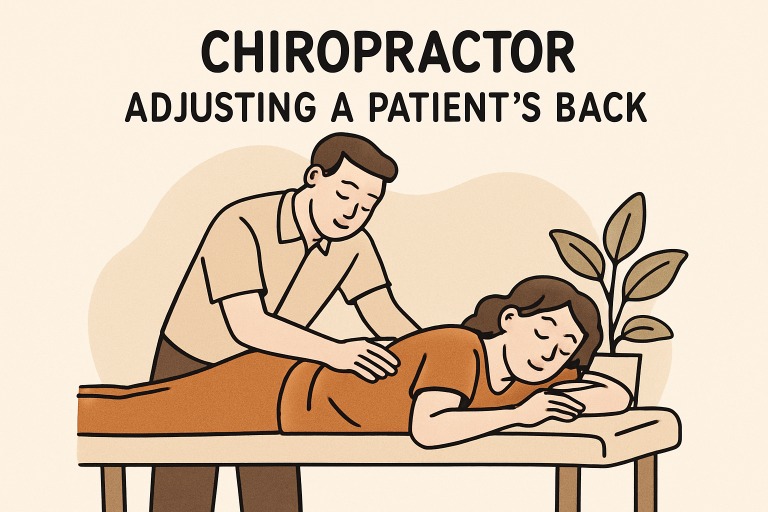Chronic Pain: A Widespread Challenge
Chronic pain impacts nearly one in five adults globally and represents one of the most common reasons people seek medical care. Whether it results from past injuries, persistent health conditions, poor posture, or tension from everyday activities, chronic pain can erode quality of life and limit participation in work, family, and leisure activities.
Familiar sources of chronic pain include back and neck problems, arthritis, nerve damage, and musculoskeletal injuries. The physical symptoms are often accompanied by emotional stress, anxiety, and disruptions to daily routines. For many women, unique health conditions such as pregnancy can intensify musculoskeletal discomfort, making effective relief significant.
Conventional Pain Management Approaches
Traditional strategies for managing chronic pain typically involve medications like analgesics, anti-inflammatories, and sometimes opioids, which come with a risk of dependency and side effects. Physical therapy, interventional procedures such as injections, and, in more severe cases, surgery, are also commonly recommended. Though these approaches provide essential relief for many, they may not address the underlying cause of the pain. They can bring risks ranging from medication side effects to long recovery periods.
There is growing concern among patients and clinicians alike about the overuse of pain medications and the need for safer, more sustainable alternatives that focus on long-term well-being. Non-drug therapies, including manual therapies like chiropractic care, are being recognized as vital components in comprehensive pain management plans.
Chiropractic care is based on the principle that the body functions best when the spine and nervous system operate optimally. Chiropractors use hands-on spinal adjustments and other manual techniques to restore alignment, reduce nerve interference, and support the body’s natural healing mechanisms. This personalized, holistic approach moves beyond symptom relief and seeks to address the root causes of pain, often resulting in lasting improvements.
Unlike many conventional treatments, chiropractic care considers the whole person, customizing care to each individual’s health history, symptoms, and lifestyle. The focus is on pain relief and restoring movement, function, and overall health.
How Chiropractic Adjustments Target Pain at Its Source
Misalignments in the spine, called subluxations, can cause irritation or compression of nerves, leading to inflammation and pain. Chiropractors aim to relieve nerve pressure, enhance circulation, and reduce inflammation by carefully realigning these areas through spinal adjustments. This technique addresses current pain and can help prevent future episodes by promoting better biomechanics and nervous system function.
Studies continue to confirm the efficacy of chiropractic care for conditions like lower back pain, neck pain, and headaches. The National Institutes of Health has reported that non-drug therapies—including chiropractic—can significantly improve the quality of life for chronic pain sufferers, helping them achieve better function with fewer risks.
Complementary Benefits: Beyond Pain Relief
Patients often experience additional benefits after chiropractic care, such as enhanced mobility, better sleep quality, increased energy, and feeling more capable throughout their daily tasks. These improvements stem from the spinal adjustments’ effect on overall body mechanics and nervous system function. Many also report a notable reduction in their reliance on prescription medications, lowering the likelihood of drug-related side effects or interactions.
One of the most attractive advantages of chiropractic care is its emphasis on empowering patients with lifestyle recommendations—for posture, exercise, ergonomics, and nutrition—that further support recovery and future prevention.
What to Expect During Chiropractic Visits
Your first chiropractic appointment typically involves a comprehensive assessment, including discussing your health history, current symptoms, and physical examination. Diagnostic imaging or tests may help pinpoint the source of your pain. From there, your chiropractor creates a tailored treatment plan to address your unique needs and goals.
During adjustments, chiropractors use gentle, controlled movements to improve spinal mobility and function. Most patients find these treatments comfortable, with little or no downtime. Chiropractic care is widely considered safe, primarily when performed by a licensed practitioner and when patients disclose relevant health information beforehand. While results vary, most people notice improvements after just a few sessions.
Choosing the Right Path: Is Chiropractic Care Right for You?
Before starting chiropractic care, it’s essential to consider factors such as the underlying cause of your pain, your overall health, and ongoing medical treatments. Some conditions, such as certain bone diseases, fractures, or severe arthritis, may require alternative approaches or specialist referral.
Experts at Harvard Medical School emphasize the benefits of integrative pain management, which combines different therapies—including chiropractic, physical therapy, and lifestyle modifications—to achieve optimal results. Open communication with your primary care provider ensures your pain management plan is practical and safe.
Takeaways for Individuals Living With Chronic Pain
If chronic pain is interfering with your daily activities or quality of life, chiropractic care may be a valuable component of your pain management strategy. Its holistic, non-drug approach targets not just the symptoms but the sources of discomfort. Choosing a licensed, experienced chiropractor and discussing your plan with a trusted healthcare provider will help ensure you receive the best possible care.
Exploring a full spectrum of supportive options—including chiropractic adjustments, physical therapy, exercise, and mind-body practices—can often provide the multifaceted relief needed to reclaim comfort and functionality. This approach makes it possible for many individuals to move forward with confidence and renewed vitality.
